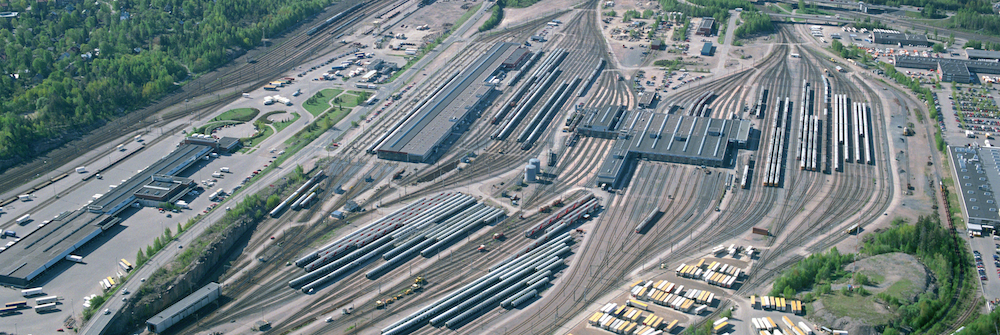Drainage water must be cleaned in the railway yard of Pasila

For decades the quality of drainage water was a source of constant problems, and oil residues were also detected in the Kumpula creek, which were thought to originate from the VR depot.
From an estimate to real-time information
Office Manager Kim Brander from Golder Associates Oy, a company serving as an environmental consultant for the project, estimates that quite a large portion of the railway yard rain and meltwater will absorb into the soil.
“In addition to the area of the site, the estimate of the amount of water flowing through the rainwater sewer was based on the average annual rainfall data and estimated evaporation and absorption volumes,” he says.
“The estimated daily flow rate was relatively high, which was reflected in the water purification costs charged. Estimate-based invoicing is not fair for either party. We want to know the exact total amount. Additionally, we need exact information about the types of impurities that migrate with drainage water, because seepage water from old landfills often causes problems for wastewater treatment plants,” explains Yrjö Lundström, Environmental Manager at the environmental services unit of Helsingin Vesi.
The measuring data are immediately available to all parties via LabkoNet. They can be put to use as such.
Flow rate measurement and water quality analysis
The purpose of the follow-up commenced towards the end of 2007 is to determine the total amount and quality of the railway yard rain and drainage water. A Nivus OCM Pro flow measurement system that also included sampling equipment was installed in the railway yard rainwater sewer. The flow rate measurement is constant, but the water quality is examined with water samples taken four times a year. Water samples are also taken from the ground and perched water observation pipes in the railway yard and from the ditches in the surrounding area.
The load imposed by the drainage water can be calculated based on the flow rate data and quality analysis results. If the water quality can be made such that it could be led back to the Kumpula creek, Helsingin Vesi would only be happy, Lundström thinks.
Data available to several parties
The measuring data are immediately available to all parties via LabkoNet. They can be put to use as such. Thanks to the versatile connections of the remote monitoring system, the target could be directly added to Helsingin Vesi’s LabkoNet site through which wastewater carbon and hydrogen sulphide concentrations had already been monitored in pumping stations at ports, etc.
“The estimated daily flow rate was relatively high, which was reflected in the water purification costs charged. Estimate-based invoicing is not fair for either party. We want to know the exact total amount.”
